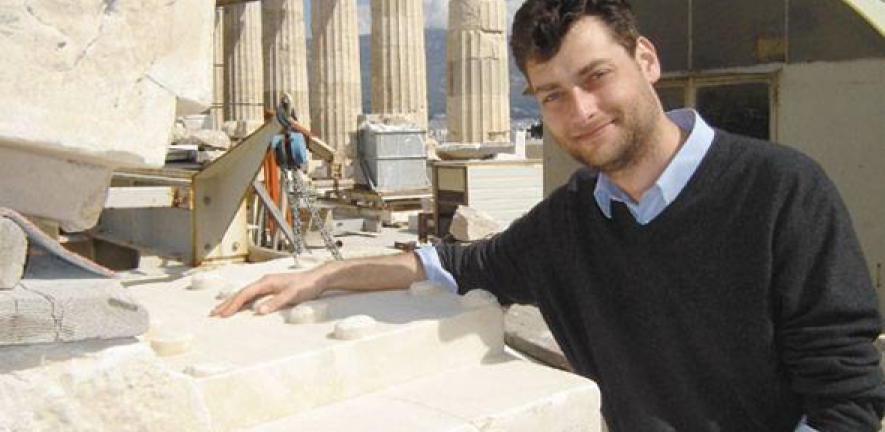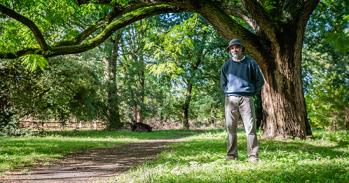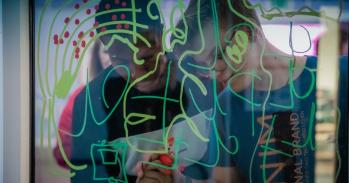
Looting of antiquities from archaeological sites is a serious crime. A fully-booked talk at Cambridge Science Festival on Thursday will unearth some of the dirty secrets of the illicit trade in precious objects and ask tricky questions about the relationships between looters, dealers and museums.
Looting of antiquities from archaeological sites is a serious crime. A fully-booked talk at Cambridge Science Festival on Thursday will unearth some of the dirty secrets of the illicit trade in precious objects and ask tricky questions about the relationships between looters, dealers and museums.
The illicit trade in antiquities is vast and crosses all borders. It stretches right from the peasant who finds a marble head while ploughing his fields up to the world’s greatest museums who acquire objects to add to their collections.
Christos Tsirogiannis
As countries with the some of the world's richest archaeological heritage sink further into financial crisis, theft of antiquities from museums and ancient sites is predicted to rise sharply. Few people in the UK are as aware of this criminal activity – or as determined to do their utmost to quash the squandering of our common past - as Christos Tsirogiannis, a researcher at Cambridge University with a mission for revealing the truth about the trade in illicit antiquities.
“The illicit trade in antiquities is vast and crosses all borders. It stretches right from the peasant who finds a marble head while ploughing his fields up to the world’s greatest museums who acquire objects to add to their collections. In between is a complex network of middlemen – each one playing a part and all covering their tracks,” said Tsirogiannis.
A forensic archaeologist, Greek-born Tsirogiannis is taking a PhD at Cambridge’s Department of Archaeology to deepen his knowledge of the dark side of the international art market. His supervisors are Dr Christopher Chippindale (Cambridge) and Professor David Gill (University Campus Suffolk), two of the world’s leading authorities on the trade in antiquities without documented collecting histories.
Tsirogiannis is passionate about our common cultural heritage – and he is determined to draw public attention to the irreparable damage done by looters and those who collude with them further up the chain. He said: “To loot and trade in stolen goods is not only a crime in that it’s against the law, it’s also a crime against humanity. Our culture is something that we all own, it’s not something to be stolen and sold for quick gain. When looters steal objects they rip them from the environment in which they have been for hundreds or thousands of years. The object may turn up again but its context, where it lay in the ground, and the information of what surrounded it, is lost for ever. This is the major catastrophe that looting causes: the irreparable loss of knowledge about our past.”
For several years Tsirogiannis was the only archaeologist working for the Greek Police Art Squad in his native Athens – and he remains actively involved in tracing stolen antiquities. Roughly three times a year he will spot an object, perhaps a vase or a sculpture , that has come on to the art market with something about its provenance (collecting history) to make him suspicious.
Once alerted to the possibility that an illegally traded item may be about to change hands, he will use his experience to investigate auction houses and galleries, museums and private collections around the world. He will make a series of comparisons between evidence included in confiscated archives by police and judicial authorities. If, at that point, he reveals a trail that suggests the illicit origin of an antiquity, he will contact the relevant authorities of the robbed country.
Tsirogiannis, who took his first degree in Archaeology and History of Art at the University of Athens, began his career as an archaeologist working for the Greek Ministry of Culture. Then one morning in August 2004 his world changed. He explained: “I got a phone call from the headquarters of the Athens police asking me to accompany them on a raid of a monastery where antiquities without any collecting history had been found. The Greek judicial system found the monks innocent – but it was a clearly problematic case.”
From that day forward Tsirogiannis worked daily for the police as an unpaid volunteer, escorting the police on raids throughout Greece and identifying looted antiquities, while keeping his day job at the Ministry of Culture. When his work with the police grew, he was offered a post with the Ministry of Justice.
As an expert trusted by the authorities, he was directly involved in a series of high-profile investigations by specialist teams from the Greek and Italian police, researching archives of looted objects that had made their way along a clandestine network of looters, middlemen, famous auction houses and high-profile dealers working closely with top collectors. The most notorious of these raids was that on the Robin Symes-Christos Michaelides summer residence in the Cyclades, where the authorities found an archive of professional photographs that recorded numerous looted and smuggled antiquities from nearly all the world’s ancient civilisations.
This photographic archive – and others – is immensely valuable in terms of information about looted objects that have travelled often thousands of miles from the sites where they were stolen, giving vital clues about their legal origin. However, it represents just the tip of the iceberg.
The 1970 UNESCO Convention on the Means of Prohibiting and Preventing the Illicit Import, Export and Transfer of Ownership of Cultural Property is an umbrella agreement signed by 120 countries. Under its terms, antiquities for sale must have a legal and documented collecting history that dates back to 1970 or earlier. Items found to have been looted can be repatriated to their countries of origin if their illegal recent travel can be proved without doubt. Over the past few years, some 130 masterpieces have been repatriated from collections worldwide including those of top museums, among them the Getty Museum, the Metropolitan Museum of New York, Boston Museum and Minneapolis Institute of Arts.
“These repatriations have been communicated to the general public as magnanimous acts whereby museums are giving items back to the nations where they originated - but in fact they happened as the result of pressure behind the scenes. No collector wants to give away an object that is not only a key part of a collection but has also cost a lot of money. However, no museum wants its reputation tarnished by news that it owns things that are in effect stolen goods,” said Tsirogiannis.
“The 1970 convention was a real turning point. But the illicit trade has continued and dealers have devised ever more devious ploys to creating a seemingly authentic profile for objects they are dealing in. This includes selling pieces through top auction houses and buying the same objects back to add both to the price and trading history. We need to tell people about this to make them aware of what’s truly going on.”
The complexity of the wheeler-dealer style transactions that characterise the murky trade in precious objects is best illustrated by the notorious case of British antique dealer Robin Symes and his Greek ship-owning partner Christos Michaelides – a tale of staggering duplicity on the part of Symes who, on the death of Michaelides and subsequent discussions about inheritance, lied about the stock of antiquities he co-owned with Michaelides.
“Looters and dealers in looted goods are motivated by money – the sums to be made get greater the higher up the supply chain you go. Some of the leading auction houses ask shockingly few questions about the objects that appear in their glossy catalogues. Again the motivation is mainly money. The motivations of collectors and museums are more complicated – it’s all about the status that goes with ownership, some times for investment, too. But they too are far too reluctant to ask searching questions about collecting history or provenance,” said Tsirogiannis.
“The public needs to know that the apparent glamour of the international art world hides a dark side – and to be aware of the scale of illicit operations. When Symes was up in court, it was revealed that he had goods (chiefly antiquities) stored in at least 33 warehouses across the world. He is just one of many whose operations have destroyed – and continue to destroy – precious aspects of mankind’s archaeological heritage and knowledge.”
Tsirogiannis was invited by the eminent archaeologist Lord Renfrew to come to Cambridge to take a PhD. In 2009 Tsirogiannis continued his in-depth research into the international illicit antiquities network in order to learn much more about the true nature of the international art market. He said: “Working at Cambridge has been a high quality choice and allowed me to develop my ideas in an environment that is ready to support active solutions, not only theoretical approaches in already known material.”
When his phone rang in 2004 and the police asked for his help, Tsirogiannis had no inkling that his life was to change. “It’s curious but I found what I really wanted to do – working as a forensic archaeologist demands attention to the detail of an art work, a passion for uncovering the truth in a crime scene, and a desire to bring to public attention knowledge that has been deliberately destroyed and would otherwise be lost. I never forget that what I am protecting is the long term future of our knowledge of the past. It suits me perfectly.”
The research being undertaken by Tsirogiannis will be part of the presentation “Illicit antiquities, immoral antiquities: what they are and why they matter” given by his supervisor Dr Christopher Chippindale at the Museum of Archaeology and Anthropology, 6-7pm Thursday, 22 March. Tsirogiannis himself will be in Italy playing the part of Ajax in a University of Cambridge production organised by Professor Emeritus Patrick Boyde of Sophocles’ “Ajax”. “It’s a great honour to take this role as, after all, the Homeric hero Ajax always fought for truth and justice,” said Tsirogiannis.
* Please note this talk is presently fully booked
This work is licensed under a Creative Commons Licence. If you use this content on your site please link back to this page.





